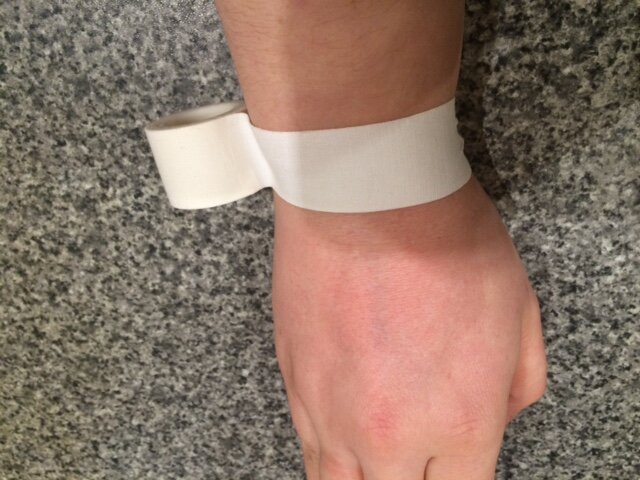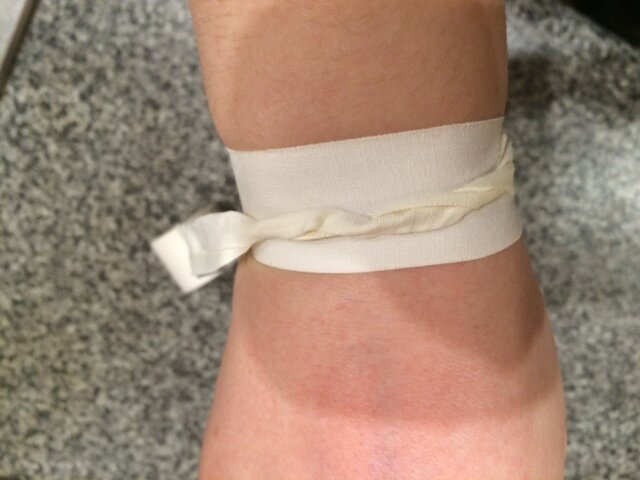Since leaving my full time office job 6 months ago to coach gymnastics full time, I’ve noticed more and more aches and pains from my body. Some, are no doubt general wear and tear from 14 years of gymnastics training but a lot of the aches and pains are due to the repetitive use of my body for spotting as well as standing for several hours a day. 6 months ago I would have spent up to 11 hours day Monday – Friday on a computer so my wrists, forearms, back, neck and shoulders did take a bit of a beating anyway due to poor sitting posture, sitting in rush hour traffic etc.
These days I spot cast to handstands, tuck backs etc on a daily basis. My wrists ache on a daily basis, as does my back from spotting, standing and moving equipment, I generally wake up every morning sore. I attend regular physio appointments to help maintain the discomfort. I’ve recently begun to add in some wrist strengthening exercises to help combat the aches (as well as doing a core and low back work out) and have been looking into purchasing some Tiger Paws or other RSI aids for my wrists. I also had a good read of the Hybrid Perspective’s post on 5 tips for Gymnastics Coaches to prevent spotting injuries and always keep the information in mind when spotting.
1) Spot With The Whole Body, Not Just Back and Arms
2) Alternate Spotting Arms/Sides Frequently
3) Find The Right Height and Distance
4) Do Pre-Hab Regularly
5) Less Ego, More Safety
My physiotherapist showed me a taping technique that many hurling players use. The technique prevents the wrist from going into too much flexion and extension, it’s a simple and inexpensive solution. The below is a very quick attempt at it for today’s post.
Step 1: Using zinc oxide tape, make an anchor around the wrist (palm facing down) (do not tear or cut tape)
Step 2: as the tape comes around for a second loop begin to twist it, placing it into the crease of the wrist (I have not twisted the tape as tight as the physio first did for me in this picture)
Step 3: Finish off by securing the tape over it.
It’s odd at first, very odd and takes a long time to get used to, in fact I’m still not used to it. The physio did it quite tight at the time, I kept it on while driving home and found it sore when changing the gears. I’ve began taping while I’m coaching and am gradually making the technique tighter to restrict more movement. It seems to a be helping.
In terms of gymnasts, I’m not sure how this will work. I taped one of the gymnasts, she tried a handstand and found it quite tough, again it probably takes some getting used to for them.
Al Fong popped up a new post on his blog this week about wrist injuries:
In the formative years of a gymnast, the wrist can take a beating while learning to tumble and vault. Like the other body parts, the wrists also need a consistent strength program as well. But most coaches don’t pay attention to this particular body part—until it becomes too painful to ignore.
As Al said, wrists take a beating during tumbling and vaulting, another one to add to that list is specifically the straddle lever to handstand skill. He offers the below as another inexpensive way to help combat wrist pain.
What are the solutions you have tried and tested? What has been the most successful? Leave a comment below.

















